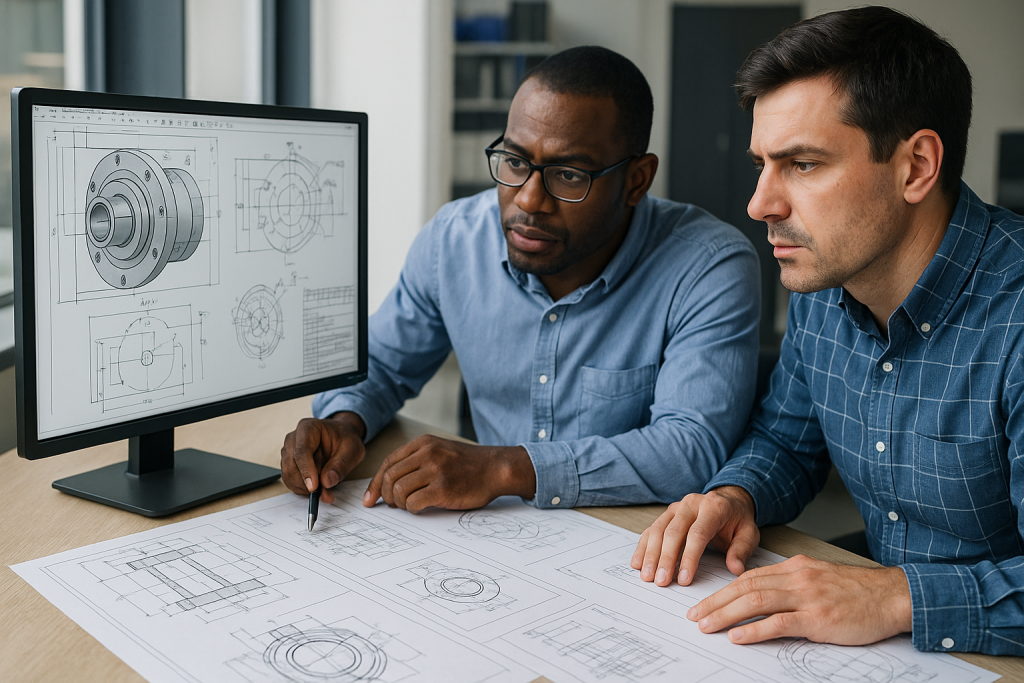In today’s highly competitive market, speed to market can determine whether a product succeeds or fails. Rapid product development (RPD) has become a crucial strategy for manufacturers and innovators who must respond quickly to customer needs and technological trends. Among the many tools enabling this transformation, 3D printing (also known as additive manufacturing) plays a central role. By reducing prototyping time, improving design flexibility, and lowering costs for low-volume production, 3D printing allows companies to accelerate innovation cycles.
For businesses looking to leverage these advantages, professional services such as Boona Prototypes 3D Printing Service provide reliable, high-precision solutions tailored to different industries.
I. What is 3D Printing in Product Development?
3D printing builds parts layer by layer from digital models, unlike traditional subtractive methods that cut material away. This approach allows for:
-
Faster prototyping with fewer design limitations.
-
Complex geometries that cannot be manufactured through conventional means.
-
Lower costs for small production runs without the need for expensive molds.
-
Material versatility ranging from plastics to metals.
II. Core 3D Printing Processes
Different additive manufacturing technologies support various stages of rapid product development. At Boona Prototypes, the following processes are commonly applied:
| Process | Material Options | Build Size | Accuracy / Resolution | Typical Application |
|---|---|---|---|---|
| SLA (Stereolithography) | Resin | 800 × 800 × 550 mm | ±0.1 mm | High-precision prototypes, transparent parts |
| SLS (Selective Laser Sintering) | Nylon (PA12, PA11) | 700 × 380 × 580 mm | ±0.2 mm | Functional parts, small series production |
| MJF (Multi Jet Fusion) | PA12, TPU | 380 × 284 × 380 mm | ±0.2 mm | End-use parts, durable prototypes |
| DMLS (Direct Metal Laser Sintering) | Aluminum, Stainless Steel, Titanium | 250 × 250 × 325 mm | ±0.05 mm | Metal prototypes, aerospace/medical parts |
| FDM (Fused Deposition Modeling) | ABS, PLA, PETG | 1000 × 1000 × 1000 mm | ±0.3 mm | Low-cost concept models, large parts |
III. Benefits of 3D Printing in Rapid Product Development
-
Accelerated Iteration – Designers can produce prototypes within 24–48 hours.
-
Cost Efficiency – No need for molds or tooling, lowering initial investment.
-
Functional Testing – 3D printed prototypes can undergo stress, heat, and mechanical testing.
-
Customization – Products can be tailored to specific user needs or applications.
-
Reduced Waste – Additive manufacturing uses only the material required for the part.
IV. Case Study: Boona Prototypes’ Capabilities
Boona Prototypes provides professional 3D printing services that cover every stage of rapid product development. Their advantages include:
-
Lead Times: As fast as 2 days for prototypes.
-
Production Scale: From single parts to 10,000+ units.
-
Material Range: Plastics, resins, and metals with different mechanical properties.
-
Certifications: ISO and IATF standards ensure consistent quality and reliability.
V. Example Data Comparison
| Parameter | Traditional Manufacturing | With 3D Printing (Boona) |
|---|---|---|
| Prototype Lead Time | 2–4 weeks | 2–5 days |
| Tooling Cost | $5,000–$20,000 | $0 |
| Design Iterations Possible | 1–2 (due to cost/time) | 5–10 (rapid prototyping) |
| Minimum Order Quantity | 500+ units | 1 unit |
This clearly demonstrates why 3D printing is ideal for rapid product development.
VI. Challenges and Limitations
While powerful, 3D printing does have constraints:
-
Material properties may not always match injection-molded plastics.
-
Surface finish may require post-processing.
-
Larger production runs may still favor traditional methods.
However, with the right partner such as Boona Prototypes, these challenges can be mitigated through hybrid solutions (combining CNC machining, injection molding, and 3D printing).
VII. Future Trends
The role of 3D printing in RPD will continue to grow due to:
-
Development of stronger and multi-material options.
-
Larger build volumes and faster machines.
-
Integration with AI-driven design for optimization.
-
Distributed manufacturing for on-demand production.
Conclusion
3D printing is no longer just a prototyping tool—it is a critical enabler of rapid product development. Companies that embrace it can significantly cut time to market, lower costs, and improve product innovation.
For those seeking professional solutions, Boona Prototypes offers comprehensive 3D printing services with fast lead times, diverse materials, and high precision to meet modern development needs.
FAQs
Q1: How does 3D printing accelerate rapid product development?
3D printing shortens development cycles by producing prototypes within days instead of weeks. This allows teams to test, iterate, and finalize designs quickly without the need for expensive tooling.
Q2: What materials can be used in 3D printing for product development?
Materials include plastics (ABS, PLA, Nylon), resins, and metals such as aluminum, titanium, and stainless steel. Services like Boona Prototypes offer a wide selection for functional prototypes and end-use parts.
Q3: Is 3D printing suitable for mass production?
While 3D printing is cost-effective for low- to medium-volume production, large-scale manufacturing often relies on injection molding or CNC machining. However, it is ideal for producing small batches, custom parts, or products with complex geometries.
Q4: What industries benefit most from rapid product development using 3D printing?
Automotive, aerospace, medical devices, consumer electronics, and industrial equipment are leading sectors. They rely on rapid prototyping for functional testing, design validation, and customization.
Q5: What are the limitations of 3D printing in product development?
Limitations include material constraints, surface finish requirements, and higher costs for very large production runs. However, hybrid solutions combining 3D printing with traditional manufacturing can address these issues.
Q6: Can 3D printed prototypes be used for functional testing?
Yes, depending on the process and material. Technologies like SLS, MJF, and DMLS produce strong prototypes that can undergo mechanical, thermal, and stress testing, making them suitable for validation before mass production.
Q7: How much does it cost to develop a prototype using 3D printing?
Costs vary by size, material, and complexity. Simple prototypes may cost under $100, while functional metal parts may run into hundreds of dollars. The advantage is that no tooling costs are required, significantly reducing upfront investment.
Q8: How fast can I get a prototype with 3D printing?
Many professional services, including Boona Prototypes, can deliver prototypes in 2–5 days, compared to several weeks with traditional methods.
Q9: Does 3D printing reduce product development risk?
Yes. By enabling early testing and frequent iterations, 3D printing helps detect design flaws before mass production, reducing costly errors and delays.
Q10: What is the future of 3D printing in rapid product development?
Future trends include multi-material printing, larger build sizes, faster production speeds, and integration with AI-driven design, making it an even more powerful tool for innovation.



